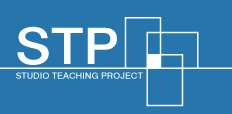
Key Findings
The Studio Teaching Project has established that the fundamental assumptions that underpin understandings of studio are in fact shared; studio is considered the core within Art, Architecture and Design pedagogies. However there are diverse applications of the concept of learning through action across the disciplines and slightly differing ‘studio’ languages, which is probably a significant contributor to the sense that assumptions about studio’s definition, place and contribution may not be shared (Ledewitz 1985). It is also evident from the STP survey contributions that university administrators struggle to justify the resource allocations needed for successful studio teaching. Studio Teaching Project research and consultation identified an extensive range of key findings and associated recommendations.
-
Studio teaching is defined as learning through action - an investigative and creative process driven by research, exploration and experimentation; making and constructing; and critique and reflection. Studio teaching develops students’ skills with materials, technology and processes of design, making and construction balanced with communication, conceptual and problem solving skills development.
-
In both academic and professional practice contexts the term ‘studio’ encompasses all the elements contributing to establishing a milieu for creative action. Art, Architecture and Design studio is understood as comprising four essential elements: (i) a culture - people - students and teachers - who build a creative community; (ii) a mode of teaching and learning - characterised by processes of critical reflection, small class sizes, periods of face-to-face contact with teacher; (iii) a program of projects and activities that reflect and integrate professional practice; and (iv) A physical space or constructed environment, teaching and workshop space, tools and equipment and technical assistance appropriate to project needs.
-
In addition to specific Art, Architecture and Design discipline skills, studio aims to develop students’ passion, rigour, initiative, motivation and intuition; engagement, tenacity and commitment; resourcefulness, self-reliance and independence; problem solving, lateral thinking and flexibility; communication, teamwork and self-reflection; and ethical conduct and respect.
-
Four principle characteristics of studio teaching as a mode of learning encompass combinations of: project-based work; learning through praxis; learning through workshop; and learning through first hand observation.
-
Human and physical resources and time for reflection and development are essential elements for all forms of studio teaching. Models of studio teaching can be grouped according to the type and focus of learning activity undertaken: project, praxis, workshop, travel, cross-disciplinary, and blended learning.
-
Government funding for tertiary education, consequential university budget allocation policies and increasing discipline costs (especially relating to staffing, ICT and space/premises) have created a sense of threat to the future viability and sustainability of studio teaching. Art, Architecture and Design academics report perceptions that their institutions undervalue their disciplines and studio teaching as pedagogy.
-
Academic workloads are believed to have increased to an unsustainable level, in part because additional administrative and quality assurance requirements result in reduced time for teaching and learning, and thereby threaten the quality of studio teaching.
-
Contemporary government policies recognising academic research that arises from studio practice present challenges and opportunities for Art, Architecture and Design academics. Responses to these challenges must be balanced and integrated with the need for quality teaching and learning.
-
Studio content in some award programs has moved from the practical considerations of professional practice towards conceptual and theoretical development, leaving a sense of imbalance – practical and technical skills are under-taught and undervalued, especially in some of the traditional Craft areas.
-
The integration of studio projects within work and industry contexts, frequently with multidisciplinary emphases, is often cited by academics as integral to successful learning outcomes and the embedding of essential graduate skills.
-
Good commencing students in Art, Architecture and Design demonstrate a mix of manual, technical, conceptual and personal skills. Standard Tertiary Entrance Ranking systems are thought to preference academic achievement and not appropriately recognise more discipline-specific preparatory study and skills.
-
Developments in senior secondary school and Vocational Education and Training (VET) curricula and the introduction of postgraduate coursework and research study present an extended learning period that has not been fully evaluated and utilised by Art, Architecture and Design educators. Coursework and Research Higher Degree and VET awards (which now include some bachelor degree programs in Art, Craft and Design disciplines) developed over the past 20 years have exacerbated concerns about duplication and encourage clarification of the content and purpose of each stage of the learning experience (especially as complementary and developmental components of learning pathways).
-
There has been a loss of some traditional Craft sub-disciplines from the (major) offerings in Art degree programs, leading to a concern that further sub-disciplines are at risk of being lost in states at the Higher Education level.
-
Benchmarks for successful studio teaching will assist academics to maximise the quality of learning outcomes within their respective disciplines. The ten benchmarks are: positive studio community; quality staff; reasonable class and group sizes; student engagement and commitment; high level of interaction; effective collaboration amongst students; quality projects; connection with industry and the profession; a variety of studio outcomes; and provision of appropriate studio space and facilities.
-
Assessment is generally acknowledged as a crucial element in the learning process, and the traditions of peer-to-peer learning, facilitated group critique, feedback and reflection are valued but unevenly utilised across the disciplines.
-
How to assess creative work effectively and what criteria to use are key issues facing educators in Art, Architecture and Design disciplines.
-
Studio assessment should focus on holistic assessment of product, process and person dimensions over the subject and/or degree.
-
There is a core set of indicators that align with what the literature, practitioners and students suggest may contribute to positive assessment in studio.
-
Certain dimensions and their associated indicators are central to the zeitgeist of each discipline and are, therefore, privileged by that discipline and may contribute to identity formation of practitioners and students in that discipline.
-
Standardised discipline-specific assessment indicators will assist teaching and learning outcomes in studio teaching within Art, Architecture and Design.



